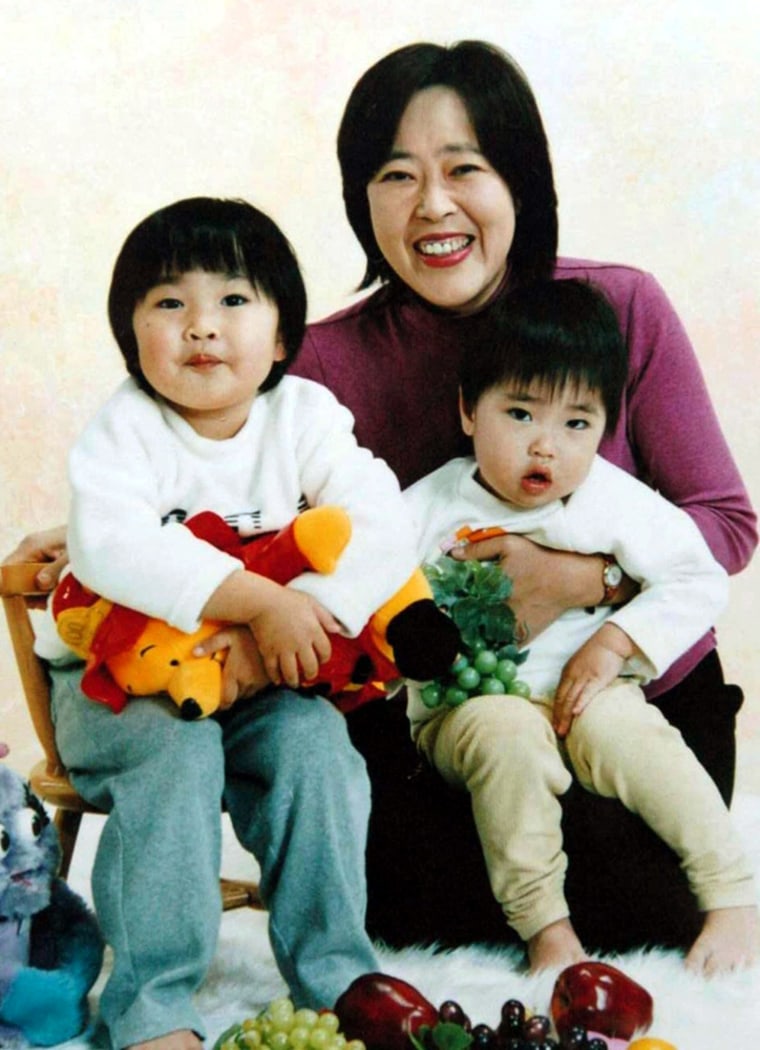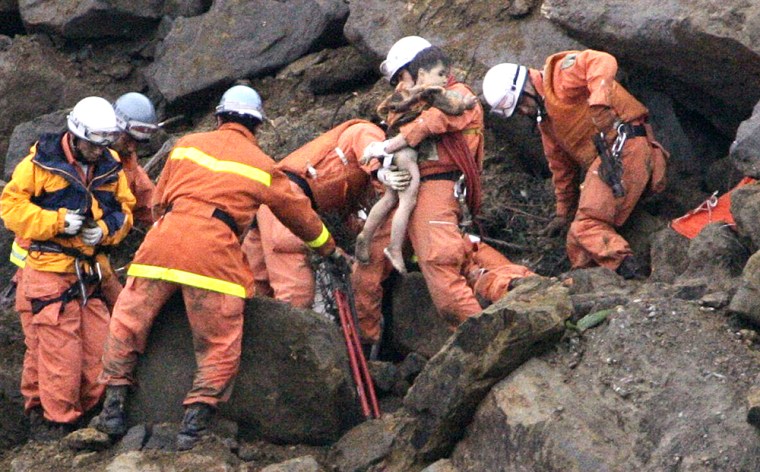In a rescue shown on live TV, a 2-year-old boy was pulled to safety Wednesday after surviving for four days buried in a landslide from the quake that ravaged northern Japan over the weekend.
The family’s white van was swept away in a wave of boulders and earth that pulverized the hillside road they were on when the 6.8-magnitude quake ripped across rural Niigata prefecture on Saturday, killing at least 32 people.
The van was spotted under hillside rubble Tuesday.
Live television footage showed the toddler Yuta Minagawa being pulled from the wreckage — covered in mud but apparently conscious. He was flown by helicopter to a hospital, said Keiko Kondo, a spokeswoman for the Tokyo Fire Department.

Hours later, the body of his mother, Takako, 39, was pulled from the wreckage and airlifted to a hospital, where she was pronounced dead. Rescuers had heard a voice coming from the van, which they initially thought was the mother’s, but doctors believe she died instantly from the impact.
A daughter, 3-year-old Mayu, was still buried and her condition was uncertain.
Rescuers temporarily halted their search for Mayu amid aftershocks but were set to resume later Wednesday.
“It’s like a miracle that they are still alive after four days buried under a serious landslide like that, with huge rocks falling down on them,” said Mikio Kawai, a spokesman for the Niigata prefectural government.
The family was the focus of intense interest in Japan, with TV stations showing Minagawa’s father’s desperate attempts to track down the family in the post-quake chaos. He was on assignment in Tokyo at the time of the quake.
The surprise rescue came hours after a powerful 6.1-magnitude quake rocked the region Wednesday morning, rattling already-damaged buildings and terrifying residents.
Homeless people in evacuation centers threw themselves to the floor and screamed in horror as the temblor rumbled through the rural area of Niigata prefecture. A 4.2-magnitude aftershock hit about 25 minutes later.
Five people were injured in the Wednesday morning quake, but it was unclear if any were in serious condition, and some buildings were damaged. One man suffered a stroke from the shock of the quake, said Hisao Ishikawa of the Niigata prefectural government.
“Aftershocks are continuing — we don’t know what the damage situation is yet,” said Kazumasa Sakurai, an official at the Hirokami city hall.
Sakurai said standing lamps and objects on desks where thrown to the floor by the force of the quake.
The train station in Nagaoka, the largest city in the quake zone, was badly shaken and in danger of collapse, and hundreds of travelers on platforms and passengers on trains were ordered to evacuate, said an official at East Japan Railway Co.’s Niigata office. Public broadcaster NHK also reported that water and gas lines had broken in the area.
The Meteorological Agency said there was no danger of tsunami waves.
The quake, which hit at 10:40 a.m., was so strong that people in temporary shelters had difficulty standing, NHK reported. The temblor swayed buildings in the Japanese capital.
By Wednesday morning, more than 440 aftershocks strong enough to be felt had hit since Saturday, although they were becoming less frequent.
